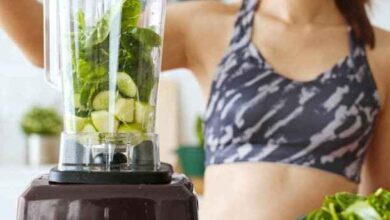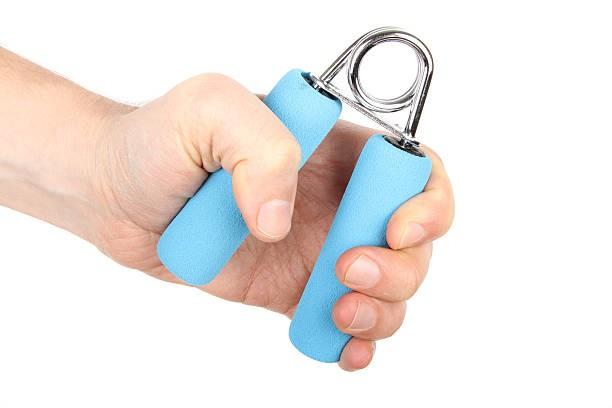
Having strong, well-defined forearms is indispensable when it comes to functional strength, grip endurance, and even injury mitigation. No matter if you are an athlete, bodybuilder, climber, or just an everyday person wanting to improve their hand strength, undergoing the right workouts with the appropriate forearm exercise tool can make a huge difference. This guide meticulously explains the best tools available with reviews, tips on their usage, and suggested workouts.
Why Train Forearms?
Here are some reasons as to why forearm training is important before we head into the equipment:
Grip Strength: Improved performance when lifting, climbing, playing sports, or during daily activities is made possible through a stronger grip.
Injury Prevention: Strength training of the wrist and forearm muscles helps to avoid strain and overuse injuries such as tennis elbow.
Functional Fitness: These muscles are important for various movements that involve the swinging action, for example, carrying groceries or even hitting a bat.
Better Aesthetics: “Vascularization and muscle hypertrophy of too much fat can lead to a ‘thick and veiny look, characterizing a well-toned body.’”
What is the best tool to build forearms?
Forearm exercise tool is best achieved with a wrist roller since it builds grip muscular strength as it provides direct, intense engagement of forearm muscles. The difference between a pulling exercise and a wrist roller is the pulling exercise engages various muscles at once, whereas the wrist roller will work through both flexors and extensors at once. This makes it very good for gaining size, strength, and endurance. All you need to do is roll a weighted rope up and down using only your wrists, and you will create muscle fatigue and growth through continuous tension.
Wrist Roller
✅ Best Features:
- Focuses on both wrist flexors and extensors at the same time.
- Creates an extreme pump and builds forearms.
- Strengthens grip and control of the wrist.
- Weight can be progressively added.
- Provides efficient workouts for burnout as well as heavy strength work.
Overview:
It includes a roller with a weight on the end that requires rolling it up and down using only your wrists, which works the entire forearm intensely—more than most pulling or gripping exercises.
Do forearm grippers actually work?
Absolutely, grippers do enhance muscle development in your forearm exercise tool and grip strength. With proper technique and regular use, they can increase grip endurance, density, and crushing strength of the lower arms.
What exercise works out the forearm?
The forearm exercise tool works out with specific exercises like wrist curls, reverse wrist curls, hammer curls, dead hangs, and farmer’s carries. These exercises strengthen the forearm flexors, extensors, and grip, with some increase in size and endurance. Also, hand grippers and wrist rollers work great in isolating and developing the forearm muscles.
Benefits of Forearm Exercise Tools
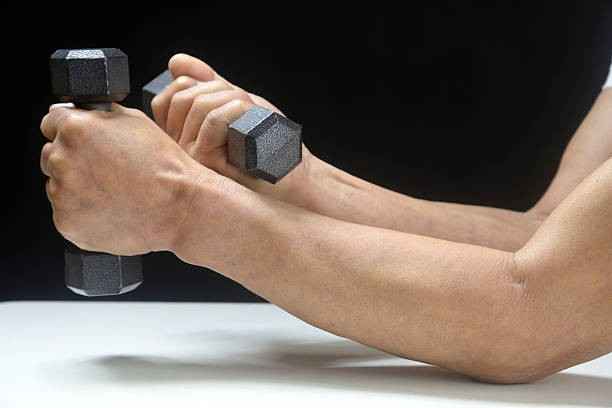
1. Improved Grip Strength
Hand grippers and wrist rollers improve your gripping and holding strength. This is especially beneficial for people who frequent the gym and take part in climbing and other forms of sports.
2. Increased Forearm Size and Definition
The use of specific resistance builds muscle tissue in the wrist flexors, extensors, and brachioradialis, resulting in greater size and definition of the forearms.
3. Enhanced Wrist Stability and Control
Regular use of designated tools helps fortify muscles that stabilize the wrist joint, enhancing control and stability as well as reducing injuries in daily activities or sports.
4. Better Lifting Performance
Better development of the forearm exercise tool to better the holding ability of heavy weights during deadlifts, rows, and pull-ups, thus removing grip as a limiting factor.
5. Injury Prevention and Rehab
Finger extensor bands and gyroscopic wrist exercisers restore muscular imbalances and strengthen tendons. This addresses problems such as tennis elbow.
6. Easily Accessible and Convenient to Use
Most forearm tools can be used easily at home, in the office, or while watching television, making it easier to maintain consistency.
7. Functional Strength for Daily Tasks
Performance in manual tasks like carrying groceries, opening jars, or tool use improves with better endurance of the grip and forearm musculature.
Top Forearm Exercise Tools
1. Wrist Roller
Most useful for: Endurance of all forearms and size of the forearm
The wrist roller single-handedly works on flexor and extensor muscles, making it a wonderful combination of a powerful and to-the-point tool.
Pros:
- Wrist roller heals grip weakness.
- Motion through full flexion improves flexor strength.
- Recovery of active extensors through rotation also improves grip endurance.
How to Use: Wrist rollers require weights in order to be effective. Maintain shoulder height while rotating the wrists so as to unwind the string and lift the poundage. Weight is gradually lowered through winding the rope back down.
Tip for Professionals: Aid better endurance by rolling slower.
2. Hand Grip Strengthener
Best for: Development of crush grip and isolated flexor strength in the forearm
These tools with adjustable tensions or springs target grip strength.
Pros:
- Very portable.
- For both endurance and strength.
- Some have adjustable resistance.
Brands Captains of Crush, Gripmaster, and Decathlon Handgrip (8-40 kg) are recommended.
Workout idea: 3 sets max reps per hand, three times a week.
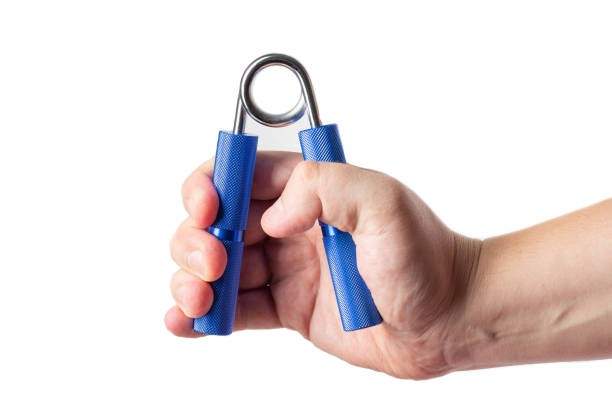
3. Fat Gripz / Thick Grip Adapters
Best for: Integrating grip and forearm challenge to any lift
Fat Gripz are thick rubber sleeves that can be placed on dumbbells, barbells, and pull-up bars.
Benefits:
- Greater activation in grip
- Increased forearm and static grip size
- Portable and simple to use
Use Them On: Deadlifts, curls, chin-ups, rows.
4. Gyroscopic Wrist Exerciser (e.g., Powerball)
Best for: Rehabilitation and endurance of the wrist
These tools employ internal gyroscopes that generate resistance based on rotational force.
Benefits:
- Gentle and low-impact, friendly to the joints
- Improves endurance of the wrist and grip
- Great for rehabilitation or as a warmup
Tip: Best results if used 1-2 minutes on each arm daily.
5. Forearm Blaster
Best for: Isolated development of flexors and extensors of the forearm.
It’s like the wrist roller but usually has more comfortable grips.
Benefits:
- Isolates wrist movement more effectively than other tools.
- Better suited to rigorous work compared to standard rollers.
Best For: Intermediate and advanced weightlifters.
6. Finger Extensor Bands
Best for: Balancing forearm development Strengthening the extensor muscles on the back of the forearm is important for wrist joint health and provides better symmetry, making this group of muscles often neglected.
Pros:
- Prevention of muscle imbalance
- Helps avoid tendonitis
- Increases manual dexterity
Routine: 2-3 times per week. 3 sets of 20 repetitions.
7. Sledgehammer / Lever Tool
Best for: Rotational wrist strength (pronation/supination)
This tool is used by martial artists and arm wrestlers because it develops explosive control of the forearm.
Benefits:
- Develops strength for practical wrist actions
- Enhances torque and rotational stability of the wrist
Drill: Controlled lever lifts and rotations
8. Wrist Curl Bar / EZ Bar
Best for: Standard hypertrophy training
Used for various forms of wrist curls along with reverse wrist curls employing progressive overload.
Sample Workout:
- Wrist Curls 3×15
- Reverse Wrist Curls 3×12
Maintain a light to moderate weight to minimize the risk of overuse injuries.
9. Rice Bucket Training
Best for: High-rep, functional forearm endurance
Use a bucket filled with uncooked rice and dig, twist, and grip to reap the benefits. This method is utilized by both athletes and therapists.
Benefits:
- Increases endurance in the fingers, grip, and wrists.
- Great for rehabilitation and protective strengthening
Routine: 5 minutes of basic hand movement exercises 2-3 times a week
10.Resistance Bands for Forearm Work
Ideal For: Exercising at home, warm-up routines, or rehabilitation activities
With a broad range of applications, bands can simulate wrist curls, extensions, and even pronation drills for beginners.
Benefits:
- Cost-effective and easy to carry
- Best suited for dynamic tension
Apply For: Joint preparation and conditioning at higher repetition ranges
Forearm Workout Routine
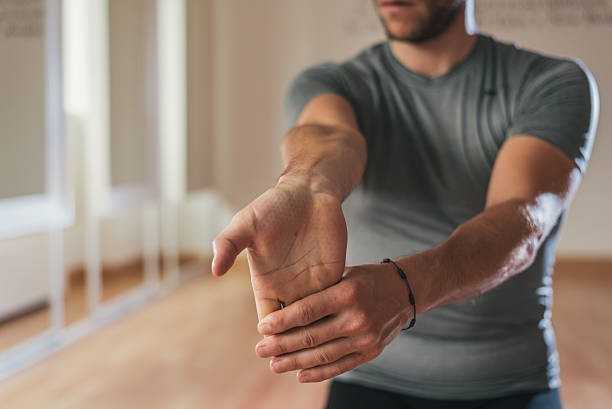
Beginner Routine (3x/week):
- Wrist Roller – 3 sets.
- Hand Gripper – 3 sets of max reps.
- Finger Bands – 2 sets of 15–20.
Advanced Routine (Split Days):
Day 1: Fat Grip Pull-Ups, Wrist Roller, Reverse Curls.
Day 2: Lever Work, Rice Bucket, Extensor Bands.
Tip: Forearms recover quickly, but don’t overdo it. 48 hours between intense sessions is ideal.
Best forearm exercise equipment
Are you searching for equipment to build muscle and increase grip strength and wrist stability? Appropriate training equipment is important when trying to lift weights, preventing wrist injuries, or even training for a particular sport. Rest assured wrist rollers, hand grip strengtheners, Fat Gripz, and resistance bands have all been rated highly and can conveniently be used either at home or at the gym. These tools will also help increase endurance and improve the strength of forearm exercise tools and extensors.
Almost anyone can benefit from using these tools regardless of their fitness level. Top-rated tools will not only help you achieve fast results but will also help you focus on building long-term gains.
How to Choose the Right Forearm Exercise Tool
| Goal | Recommended Tool |
|---|---|
| Mass & Size | Wrist Roller, EZ Curl Bar |
| Grip Strength | Hand Grippers, Fat Gripz |
| Endurance | Rice Bucket, Powerball |
| Rehab | Finger Bands, Resistance Bands |
| Sport-Specific | Sledgehammer, Lever Tool |
Where to Buy Forearm Tools
- Decathlon – Budget-friendly and entry-level equipment like hand grippers is available.
- Amazon / Flipkart – Extensive collection of equipment including rollers, grippers, and rice buckets.
- Rogue Fitness / IronMind – Top of the line forearm grip training tools.
- RPM Power – Specialized in gyroscopic tools such as the Powerball.
Forearm exercise with dumbbell
To improve muscle and grip strength, perform simple dumbbell forearm exercises. Forearm muscles crucial for enhancing the definition and function of the arms can be sculpted by wrist curls and reverse wrist curls. From the comfort of your home or in a gym, dumbbell forearm exercises are accessible and beneficial for those seeking upper body fortification.
Conclusion
In conclusion, achieving optimal grip strength, muscle endurance, and arm definition can be attained through targeted forearm exercise tool. Specialized tools such as wrist rollers, hand grippers, and dumbbells, if included in one’s fitness regimen, will help concentrate on forearm muscles efficiently. Selecting the right tool that aligns with your desired progress will help build powerful forearms effectively with time.
Frequently Asked Questions:
Q1: What is the best forearm exercise tool for beginners?
To begin with forehead exercises, a hand grip strengthener may be the most appropriate option. This device is simple, inexpensive, and does an excellent job of enhancing one’s grip and engaging the forearm muscles.
Q2: Do forearm exercise tools really work?
Yes, forearm exercise tools such as hand grippers, wrist rollers, and resistance bands have proven effective in enhancing muscular and physiological endurance of region-specific muscles, given that the tools are used consistently and correctly.
Q3: How often should I use forearm tools?
Ideal use is from two to four times a week, with novices starting at two sessions and more advanced learners making use of the tools frequently, varying the workouts based on recovery and intensity.
Q4: Is it possible to develop forearm muscles at home without gym equipment?
Of course! Tools for forearms such as resistance bands, hand grippers, and rice buckets are easy to use at home. You do not need a gym membership in order to achieve great results.
Q5: Which forearm tool is best for grip strength?
Hand grippers, Fat Gripz, and wrist rollers are effective for building grip strength. These tools focus on specialized grips of varying strength—from crush grip to endurance and static holds.
Q6: Are forearm tools effective for avoiding wrist injuries?
They can! Employing forearm tools such as extensor bands, resistance bands, and gyroscopic balls can fortify the muscles around the wrist, enhance joint stability, and lower the risk of elbow and wrist injuries.
Q7: When can I expect to see results from training my forearms?
Most users start noticing some improvements in grip strength within 2–3 weeks. Additional muscle definition in the forearms usually starts becoming visible in the trained individual after 6–8 weeks of consistent training.
Q8: Where can I buy forearm exercise tools of good quality?
Good quality forearm exercise tools can be purchased on Amazon as well as at Decathlon, Rogue Fitness, and RPM Power. Make sure to match the tools with your goals, whether they are strength, endurance, or rehab focused.
Q9: What is the most effective exercise for developing forearms?
The most effective exercise for developing forearms varies depending on muscle size, grip strength, or endurance. Despite that, one of the most effective and well-rounded tools is the wrist roller, which makes it suitable for most users.



